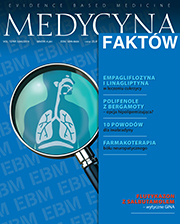Awareness of the functioning of the voice, its emission and physiotherapeutic treatment possibilities, and the health of the vocal organs Original article
Main Article Content
Abstract
This paper presents the results of analyzes regarding the impact of awareness in the field of functioning of the voice, its emission and physiotherapeutic treatment possibilities on the health of the vocal apparatus. They are based on data collected by means of a survey and literature review. The main objective of the study was to assess and compare the prevalence of voice emission disorders among those involved and not involved in vocal training. The research groups were teachers, academic lecturers, vocalists, lectors and voice instructors, that is the most important vocational groups using voice at work and most exposed to potential dysfunctions within the vocal apparatus. According to the research, almost half of the respondents experienced laryngitis in the last 2 years or had similar diseases of the airways which prevented them from using their voice. Almost 25% of the people participating in the study declared that they were not aware of the possibilities of rehabilitating the voice apparatus with the help of a physiotherapist, and 8% of the respondents showed a moderate or large voice disability on the Voice Handicap Index (VHI) scale, which provides the basis for further research in the area.
Article Details
Copyright © by Medical Education. All rights reserved.
References
2. Śliwińska-Kowalska M., Niebudek-Bogusz E., Fiszer M. et al.: The prevalence and risk factors for occupational voice disorders in teachers. Folia Phoniatr. Logop. 2006; 58(2): 85-101.
3. Smith E., Gray S.D., Dove H. et al.: Frequency and effects of teachers voice problems. J. Voice 1997; 11(1): 81-87.
4. Italo F.A., Di Maio G., Costa G. et al.: Prevalence of occupational voice disorders in teachers. J. Prev. Med. Hyg. 2009; 50(1): 26-32.
5. Pruszewicz A.: Foniatria kliniczna. PZWL, Warszawa 1992.
6. Garcia Martins H., Abrantesdo Amaral H., Mendes Tavares E.L.: Voice Disorders: Etiology and Diagnosis. J. Voice 2016; 30(6): 761.e1-761.e9.
7. Gębska M., Weber-Nowakowska K., Żyżniewska-Banaszak E.: Zastosowanie techniki fonacyjno-oddechowo-artykulacyjnej – jako formy profilaktyki i rehabilitacji zaburzeń emisji głosu u nauczycieli. Hygeia Public Health 2014; 49(2): 209-214.
8. Gębska M., Wojciechowska A., Żyżniewska-Banaszak E.: Zasady i metody rehabilitacji chorych z zawodowymi zaburzeniami głosu. Ann. Acad. Med. Stetin 2011; 57(2): 78-84.
9. Obrębowski A.: Postępowanie lecznicze i rehabilitacyjne w chorobach narządu głosu u nauczycieli. Otolaryngol 2003; 2(1).
10. Zalesska-Kręcicka M., Kręcicki T., Wierzbicka E.: Głos i jego zaburzenia. Zagadnienia higieny i emisji głosu. Polskie Towarzystwo Pedagogów Śpiewu, Wrocław 2004.
11. Gilman M., Johns M.M.: The Effect of Head Position and/or Stance on the Self-perception of Phonatory Effort. J. Voice 2017; 31(1): 131.e1-131.e4.
12. Obrębowski A.: Postępowanie foniatryczne w zawodowo uwarunkowanych zaburzeniach głosu. Otolaryngol. 2002; 1(3): 161-166.
13. Obrębowski A.: Narząd głosu i jego znaczenie w komunikacji społecznej. UM Poznań, Poznań 2008.
14. Niebudek-Bogusz E., Kuzańska A., Błoch P. et al.: Zastosowanie wskaźnika niepełnosprawności głosowej (Voice Handicap Index – VHI) w ocenie efektywności terapii głosu u nauczycieli. Medycyna Pracy 2007; 58(6): 501-509.
15. Szkiełkowska A., Miaśkiewicz B., Remacle M.: Jakość głosu u pacjentów po zastosowaniu metody iniekcji kwasu hialuronowego do fałdów głosowych – doniesienie wstępne. Otolaryngol. Pol. 2011; 65(6): 436-442.
16. Łastik A.: Poznaj swój głos… twoje najważniejsze narzędzie pracy. Studio EMKA, Warszawa 2006.
17. Scech M.: Wskaźnik niepełnosprawności głosowej – efektywność i korelacja pomiędzy cechami fizycznymi, funkcjonalnymi oraz emocjonalnymi a zaburzeniami głosu. Pomeranian J. Life Sci. 2016; 62(1): 9-15.
18. Augustyńska D., Kaczmarska A., Mikulski W. et al.: Ocena narażenia na hałas nauczycieli na przykładzie 3 szkół podstawowych w Warszawie. Bezpieczeństwo Pracy – Nauka i Praktyka 2012; 2: 16-19.

